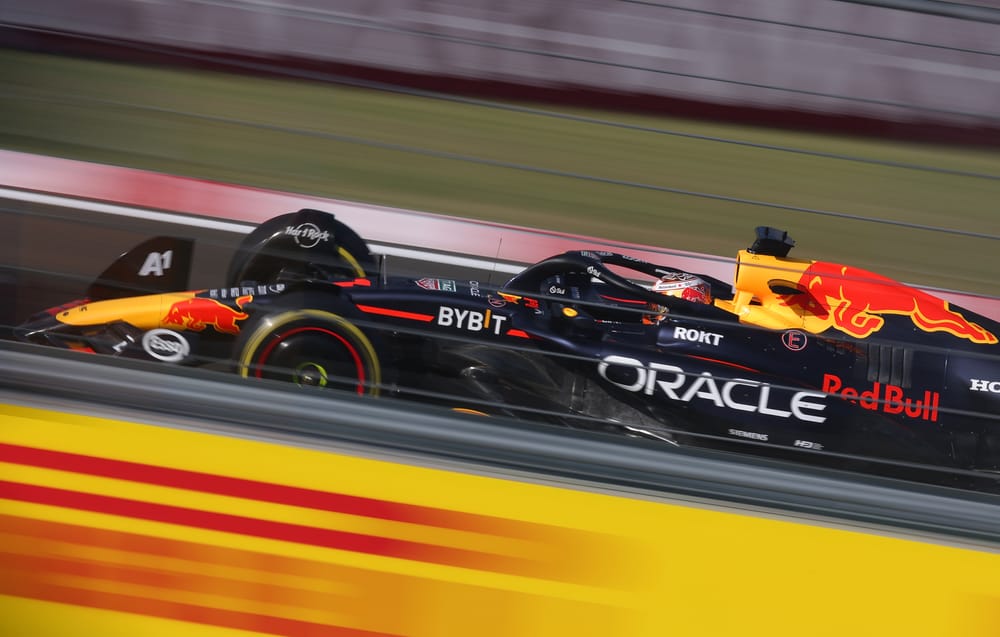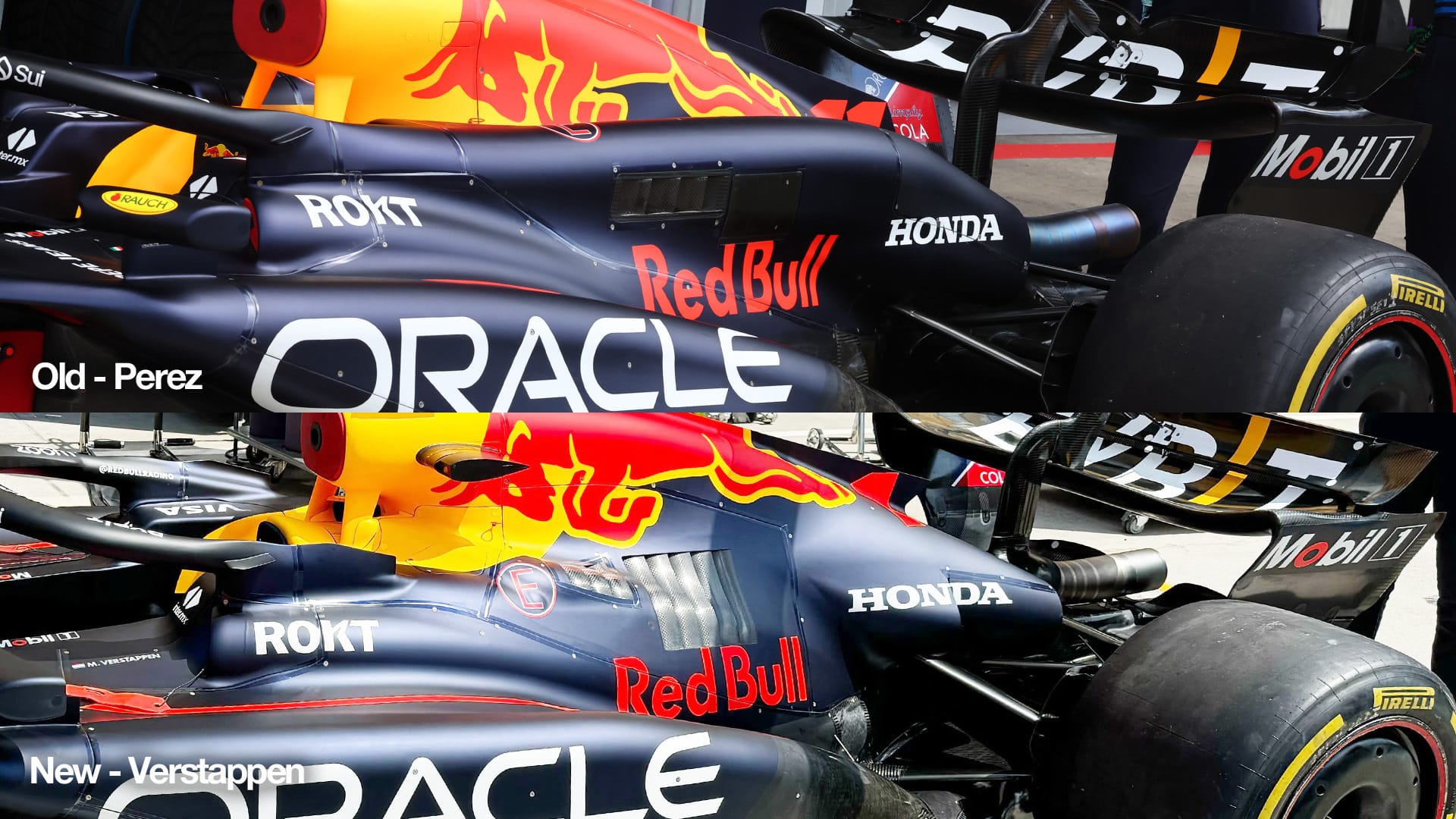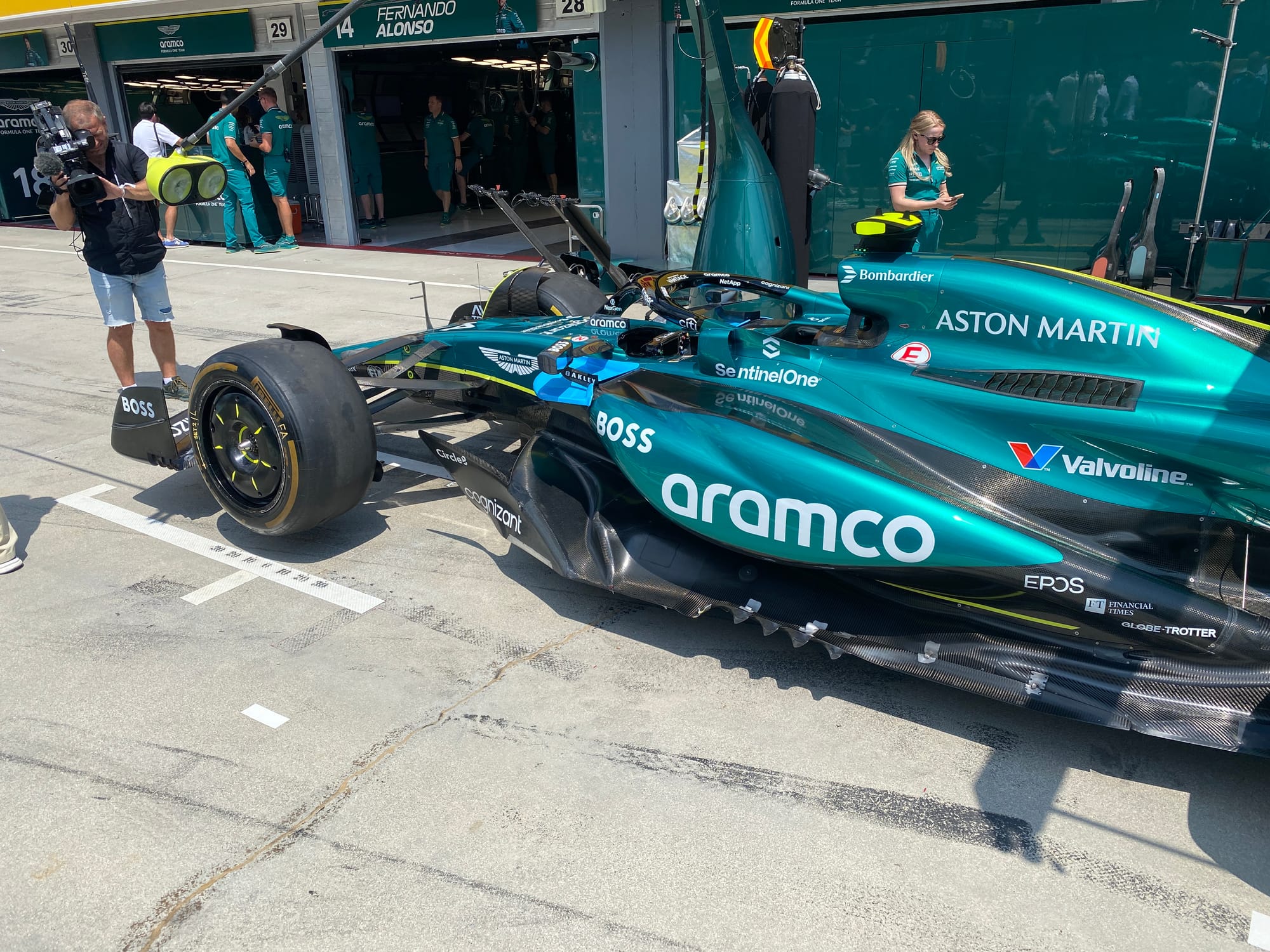Up Next

The crucial gap here around a sweltering Hungaroring on Friday is the 0.243-second margin by which Lando Norris headed Max Verstappen in FP2 in their respective qualifying simulations.
The McLaren is fast - probably faster than Mercedes and Ferrari - but it’s probably not the fastest.
Verstappen got a little crossed up as he exited Turn 2. It looks nothing, a blink-brief snap. But it costs him a lot of time. Not only in that corner but through Turn 3 and in the drag up the straight to 4. He entered Turn 2 already 0.112s ahead of Norris. By the time he arrived at Turn 4 he was 0.248s behind.
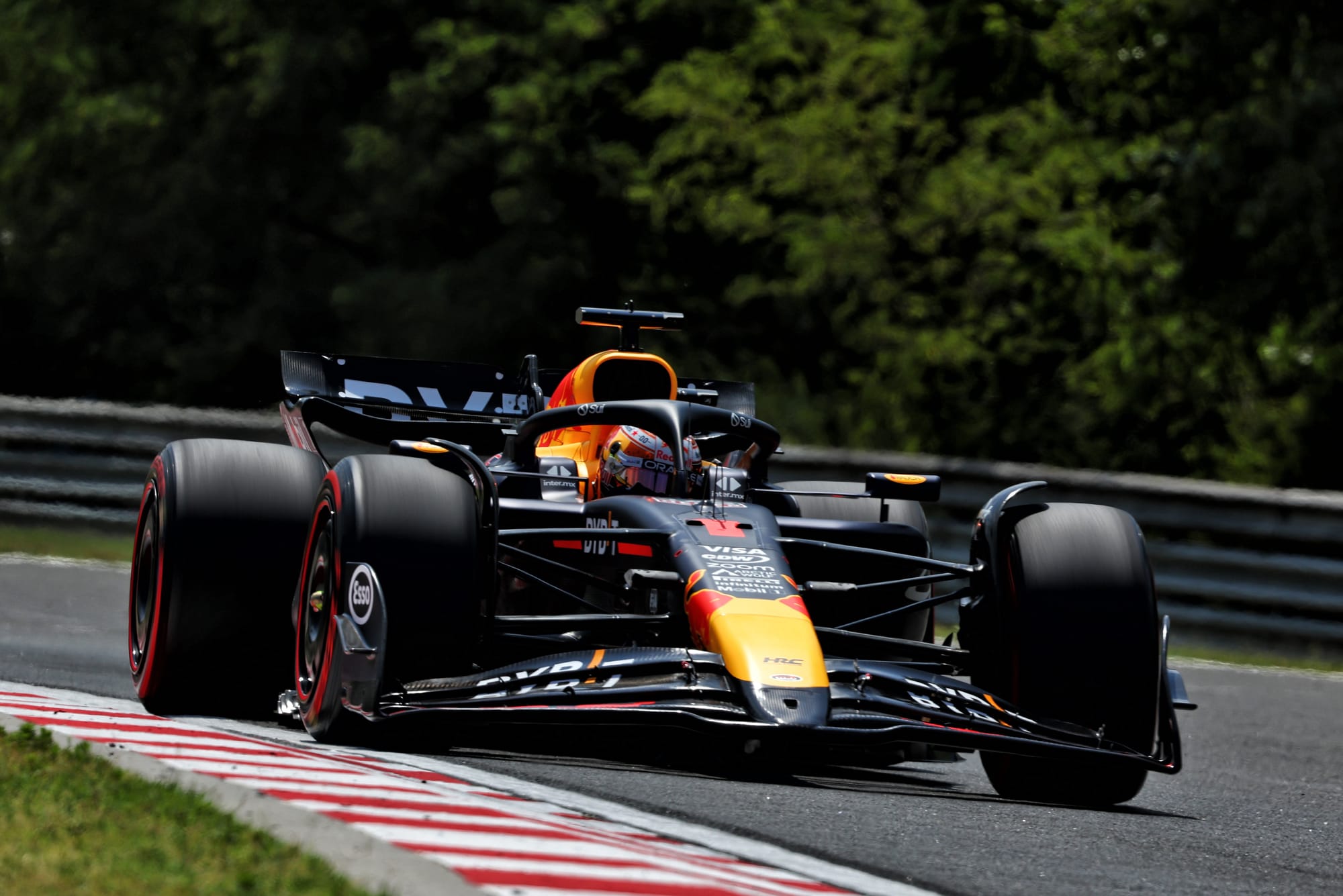
On every other straight the Red Bull is faster than the McLaren. It was only slower on this one because of that snap of oversteer, which ended up costing Verstappen 0.36s.
It was a very promising opening day for the new-spec Red Bull, with bodywork designed to favour higher downforce tracks. But Sergio Perez with the old bodywork (but new front wing) was quick too, fourth fastest (albeit 0.224s off Verstappen’s compromised lap).
He then proceeded to set the fastest long-run average of all, a couple of tenths faster than Verstappen on the same medium compound C4 tyre. But that difference was purely down to how hard they each hit the early part of their stints, as they tried between them to find the optimum level of tyre management around a track which imposes heavy thermal degradation of the rears.
Perez began much more aggressively at around 0.9s faster than Verstappen. Over seven or eight laps, Perez’s approach proved faster. But a typical opening stint length in what should be a two-stop race will be more like 18-20 laps.
Long run times
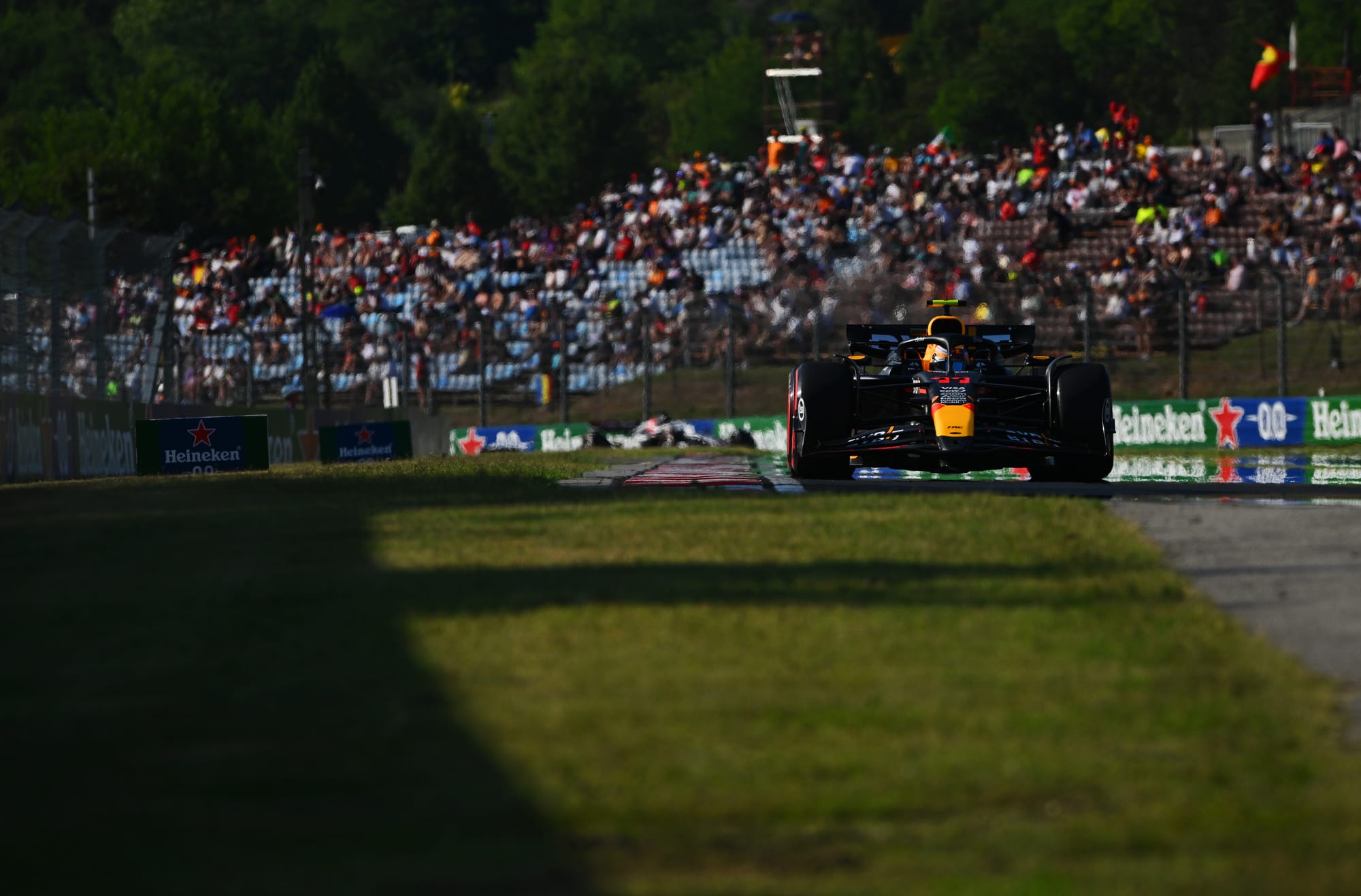
Perez 1m23.939s (6 laps, medium)
Norris 1m24.146s (8 laps, hard)
Verstappen 1m24.221s (7 laps, medium)
Russell 1m24.741s (5 laps, medium)
Sainz 1m24.705s (10 laps, medium)
Hamilton 1m24.796s (9 laps, soft)
Piastri 1m24.935s (4 laps, hard)
The bigger point being that Red Bull looks in formidable shape here. Potentially fastest over a single lap and Perez quickest on a simulated race stint. That’s before even taking into account that Red Bull typically runs a lower engine mode than the Mercedes and Ferrari runners on Friday. But that may not be the case here, given how power-insensitive the track is and how Red Bull will be surely looking to maximise power unit life now that Verstappen is on his final unpenalised engine.
That being the case, could McLaren - or Mercedes or Ferrari - challenge? McLaren very often takes a low key approach to Fridays and if it’s done so with fuel loads here, then perhaps.
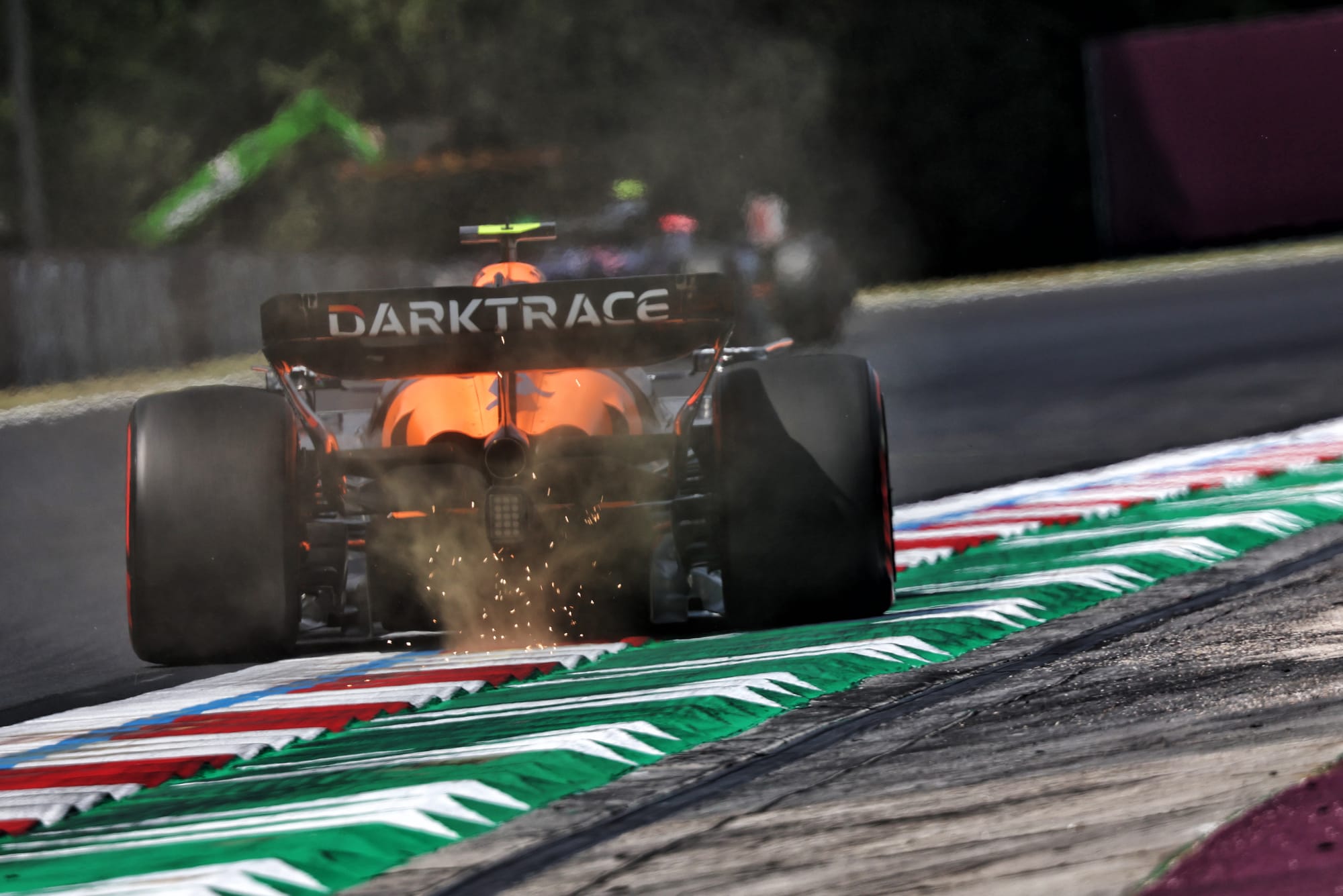
“You can have a fast car that’s easy to drive in an ideal world. You can also have a fast car which is a bit more on the edge and a bit more difficult. That’s more real world and what we have [in Hungary],” said Norris. Certainly he looked like he was pushing extremely hard and came close on one occasion to replicating Charles Leclerc’s accident at Turn 4, which put the Ferrari out of FP2 after 15 minutes.
Given that Verstappen had his moment too, it all just underlined how tricky the cars tend to be here, as they are invariably set up with some understeer in the balance in order to protect the rear tyres on race day. That entry understeer means that as the balance changes mid-corner with lock already applied, the snap tends to be extra vicious.
This generation of car is generally prone to slow-corner understeer anyway, but high-speed oversteer. It is this conflict of demands that Red Bull’s new bodywork has been designed to address - and the Hungaroring is the perfect layout to test if it’s worked.
It should give more slow-corner rear downforce thanks to the better airflow fed to the rear wing, beam wing and diffuser. With more inherent rear aero grip to tame the car at high speeds, you should in theory be able to add extra front wing loading to reduce the slow-corner understeer. Verstappen was super-fast through the two high-speed corners - Turn 4 and Turn 11 - but still very competitive in the slow turns. Has this just edged the Red Bull clear once more?
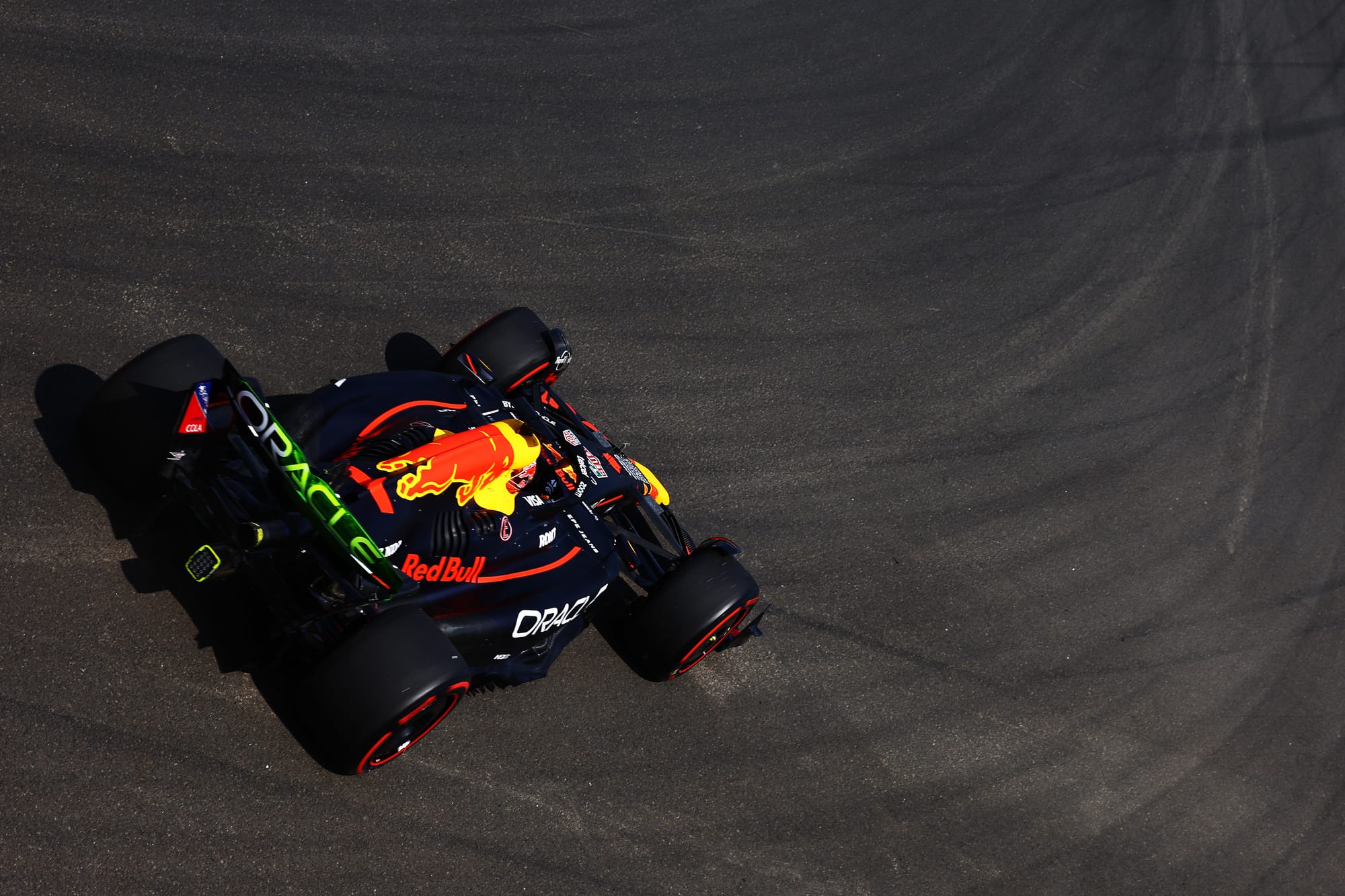
As Verstappen embarked upon one of his early runs in FP1, race engineer Gianpiero Lambiase asked him: “Are you happy with the low to high speed connect?” Verstappen replied, “I’ve got understeer at low speed,” and proceeded to ask for an extra three clicks of front wing.
That’s a lot of extra front - yet with the car like that he immediately went 0.9s quicker, the fast corner performance still there. How is the balance now, GP asked. “Good,” came the reply. That’s potentially ominous for the rest.
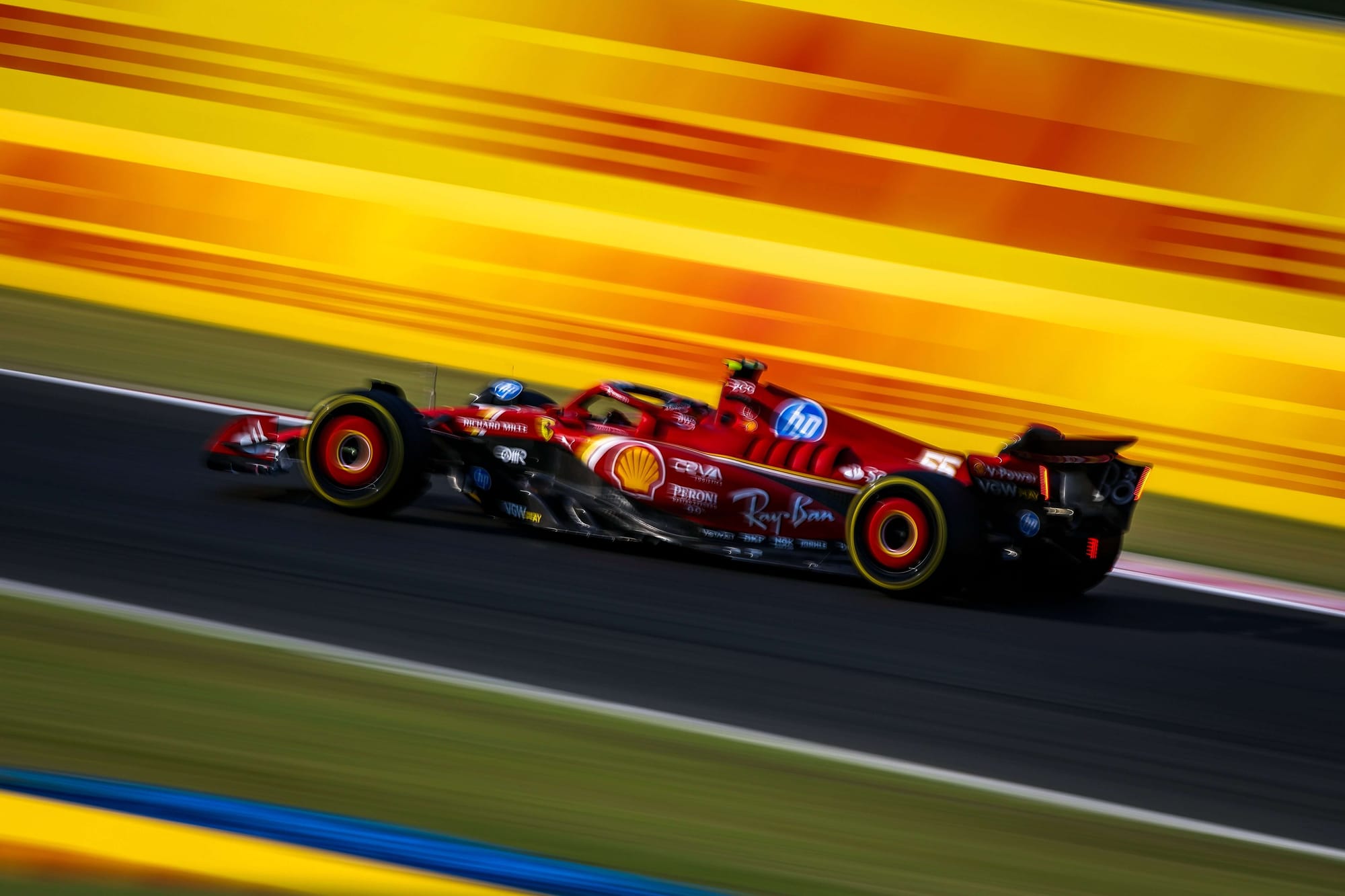
Ferrari looked good at times but it was running a skinnier rear wing than any of the other top three teams and that is giving it a lively balance. That helped Leclerc to his car-damaging off and probably playing its part in Carlos Sainz’s less than stellar long run. The pair professed themselves happy with the revised floor, but this isn’t the sort of track layout which would typically induce the sort of high-speed bouncing the car had suffered from at Barcelona, Austria and Silverstone.
Mercedes wasn’t carrying on from where it left off at Silverstone. “We don’t seem to be as competitive as the McLaren and Red Bull in these very hot conditions,” noted George Russell. “We weren’t on our best form,” said Lewis Hamilton, “and while our long run pace was decent, we are a step behind on ultimate pace.”
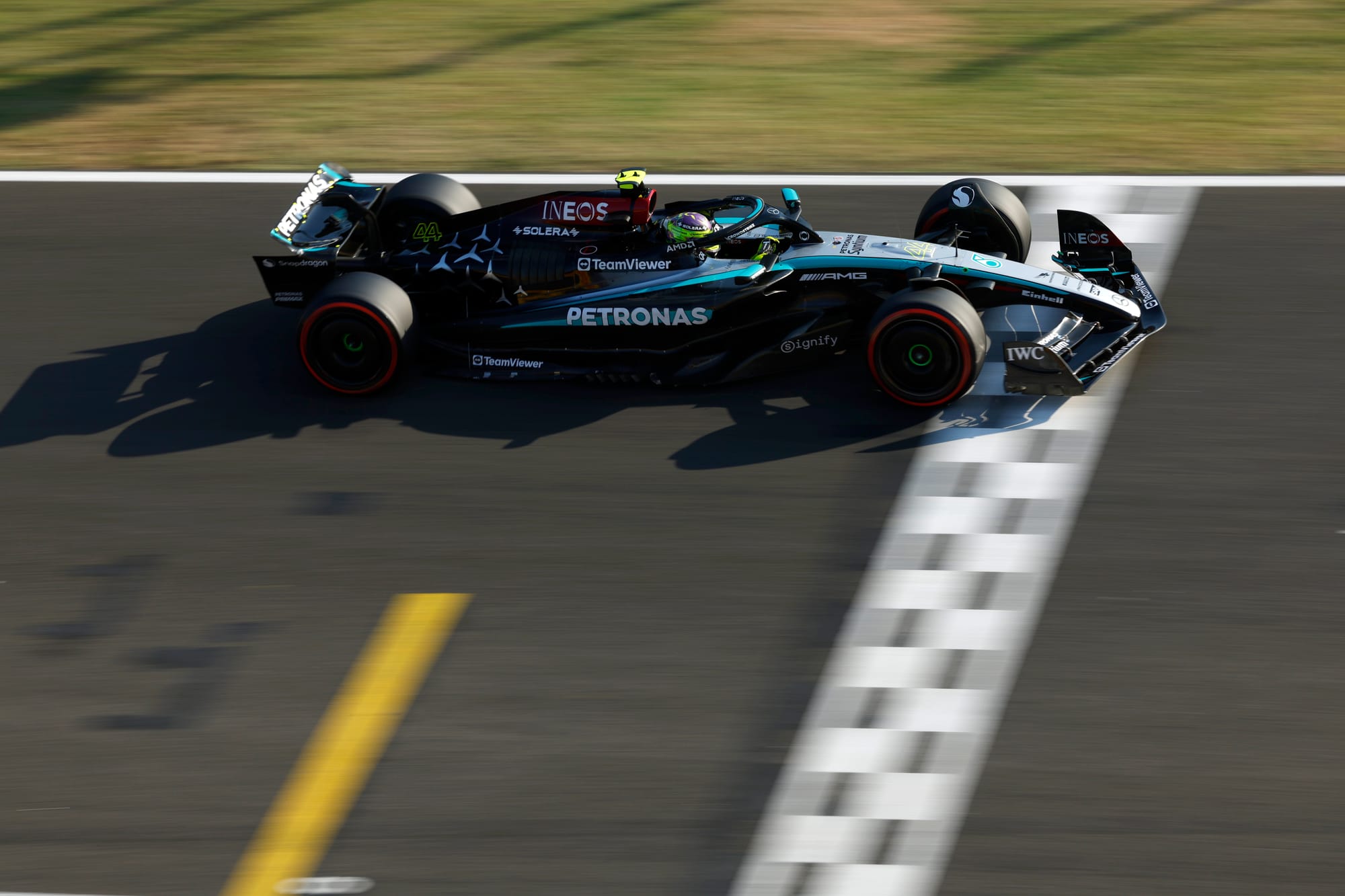
It was notable that in both FP1 and FP2 all three tyre compounds were used. Although the track places a high thermal stress on the rears tyres, the soft is historically counter-intuitively good relative to the medium.
The combination of a high macro-roughness of the track surface with high temperatures tends to make the harder compounds slide excessively, thereby negating much of their durability advantage over the soft. The medium still has a longer range and is therefore strategically valuable, but the soft offers the tempting prospect of making places off the grid if you are not on the front row.

